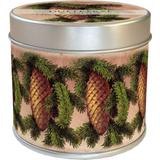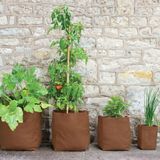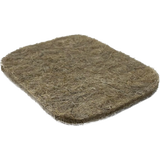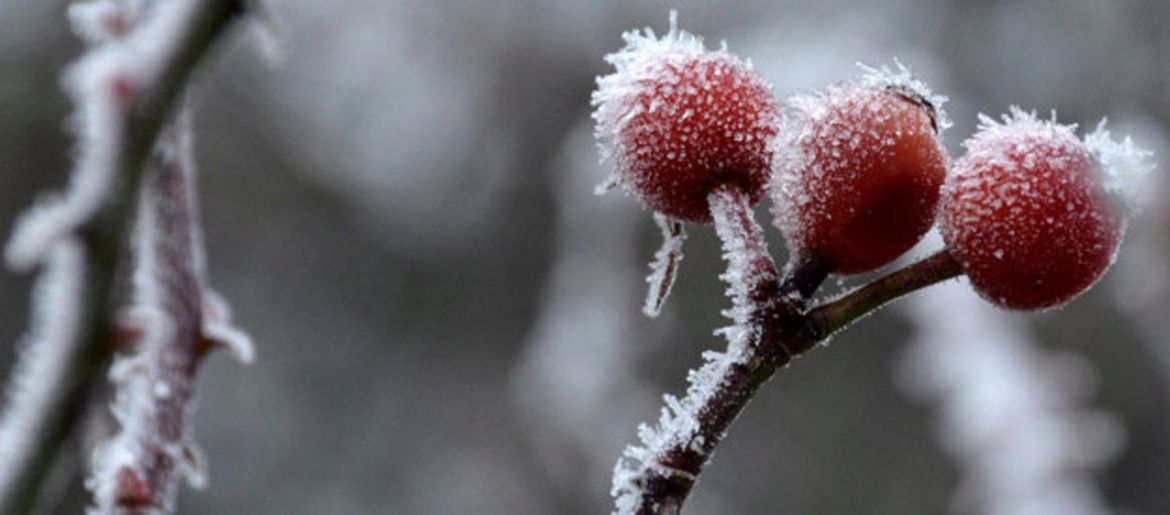Gardening in December
Believe it or not, there is definitely gardening work to be done in December.
Protect your plants
Native trees are generally hardy and do not need extra protection. Newly planted trees and shrubs, however, do need winter protection. Young trees can be protected using a jute or burlap jacket.
During heavy snow, the trees can be shaken and can be weighed down by snow. This causes branches to break or bend. Check on your trees after strong winds, as they can also be damaged by storms.
Freezing is also a danger for plants. Frozen water in the ground can damage their roots or push them out of the ground. Once the soil isn't frozen anymore, gently push the roots back into the ground.
Trimming
The best time to trim plants is during winter. Look for a dry, frost-free day and make your cuts. Pruning keeps your trees healthy! Shrubs can be cut back so that sunlight and air evenly reach all their branches.
You can also remove heavy branches from trees so that new branches or shoots have light to grow. Cut away dense or weak branches.
For evergreen plants, avoid trimming when it isn't necessary. Trimming during winter can leave them exposed to frost. Conifers should not be trimmed.
When cutting, always ensure that the surface cut is as small and as smooth as possible.
Keep watering!
Hardy plants need water, otherwise they dry out. Make sure to check on them even during winter.
Pesticides
Make sure you have the right pesticides for spring before the season rolls around. Check your old containers to make sure they are still useable and are not expired.
Maintain perennials
Sensitive perennials need to be properly covered. A layer of leaves or branches helps keep the cold from penetrating the soil. Check on your perennials from time to time to make sure they haven't frozen. Leave the withered stalks and seeds of perennials behind as they often provide valuable food for birds and insects.
Keep your tools cared for!
Check on your tools and make sure they stored are clean and dry. If they have started to rust, remove the rust with sandpaper or a wire brush.
Check on your tubers or bulbs
Tubers and bulbs are best stored in a cool, dry, frost-free place. Wooden boxes filled with dry potting soil or sand make good storage places. Regularly check to make sure the bulbs haven't rotted.
Watch out for snow!
Shrubs can collapse under too much snow. After heavy snowfall brush the snow off of your shrubs.
Think of the birds
Keep your bird feeders full during winter, and make sure they are regularly filled to keep your feathered friends cared for during winter.
Latest reviews
-
 1.0 (1)
1.0 (1)Sköna Ting Christmas Fir Scented Candle
- 100 % soy wax
- Burning time: approx. 30 hours
- Size: 7 x 7 cm
€ 12,59Delivery by January 03
-
 4.9 (14)
4.9 (14)Lechuza DELTINI Premium Tabletop Planter, Scarlet Red High Gloss
-5%- Scarlet Red High Gloss
- White High Gloss
- Anthracite Metallic
- Taupe Glossy
- Dimensions: 15 x 15 x 19 cm
- Perfect as a gift
- Made in Germany
€ 18,99 € 19,99Delivery by January 03
-
 3.5 (4)
3.5 (4)Haxnicks Hemp Fibre Pot, 20 litres
- Provides roots with oxygen
- 100% natural fibres
- Completely compostable
€ 6,09Delivery by January 03
-
 2.0 (1)
2.0 (1)erbgruen Hemp Fibre Mats for Microgreens, 10 items
- Made from natural hemp fibres
- Promotes root development
- For optimum water storage
€ 8,99 (€ 0,90 / item)Delivery by January 03
Magazine Articles:
-
Austria: Free standard delivery from € 39,90
-
Free
returns -
24-hour shipping
More than 11.450 products

